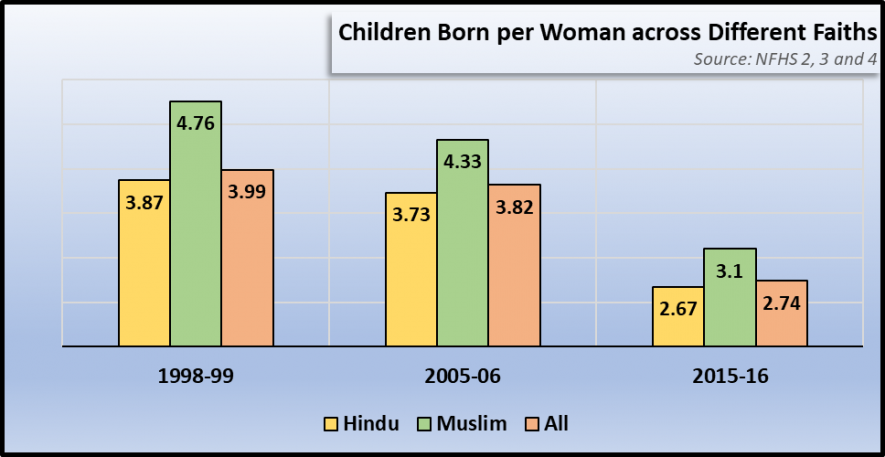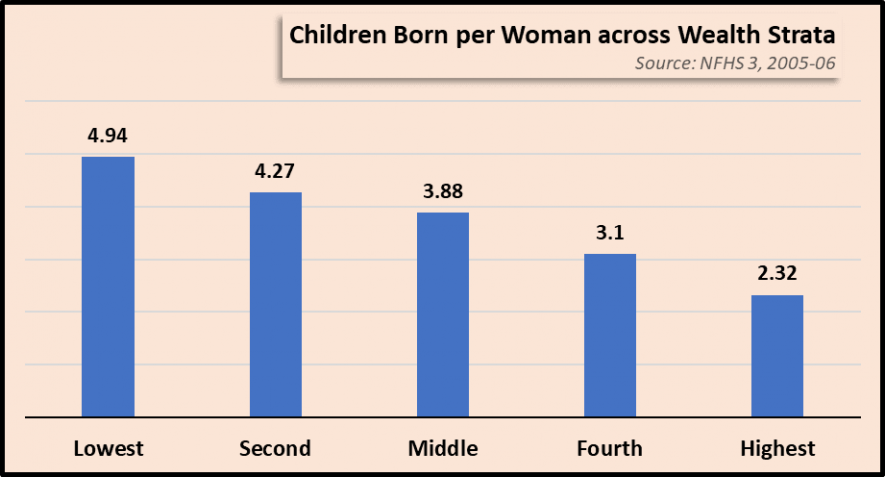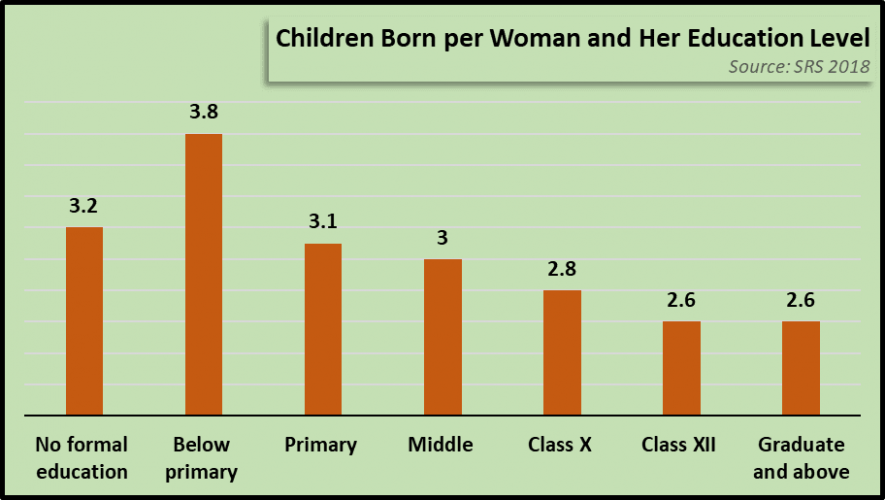UP Population Bill: Fighting Imaginary Demons
Representational use only. Image Courtesy: FII
The proposed UP Population Control Bill, brought in by the Yogi Adityanath-led BJP government in India’s largest state Uttar Pradesh, appears to be driven more by imagined fears than by any worries of population growth. Data over the past few decades shows clearly that population growth is slowing down irrespective of administrative action or inaction. This is an all India trend and UP is no exception.
What has not been said officially by Chief Minister Adityanath or his party, but is being perceived as the real motive behind this move is the well-known but much discredited thesis that Muslim population is growing very fast, and that it may overtake Hindu population in the future. How this can happen is never substantiated by authentic data that is available in public domain. But simply raising the worry, perhaps, serves to meet political or electoral ends. Assembly elections are slated for next year in UP, so it is no surprise that this bogey has been resurrected.
What is the data?
Total Fertility Rate (TFR), or the average number of children born to a woman, is one of the best measures of how populations increase or decrease over time. Let us look at the data on UP. It is available from the reports of various rounds of the National Family and Health Surveys (NFHS). Unfortunately, UP’s data for the latest (Fifth) round held in 2019-20 is not yet available as the pandemic seems to have interrupted the collection.
The chart below summarises the TFRs of Hindus, Muslims and total population in UP over 1998-99, which was the second round of NFHS, till 2015-16, the fourth round. Among Muslim women, the average number of children born per woman fell by about 35% from 4.76 in 1998-99 to 3.1 in 2015-16. This decline is more than the corresponding dip among Hindu women, which fell from 3.87 to 2.67 – a reduction of about 31%.

This data also shows that the overall population is also not growing as fast in UP as earlier. Average number of children born to women in the state have dipped from nearly four (3.99) to 2.74 over this 17 year period.
Increasing awareness and education, declining threat of children dying, better availability of contraception methods and, most importantly, the realisation that economic interests are not better served by having more children have created this societal phenomenon of decreasing population growth. This feeling permeates all faiths.
Poverty and Lack of Education Are Factors
NFHS surveys used to have an important bit of information that was apparently discontinued since after 2005-06 for unknown reasons. This was the correlation between fertility rates and economic status of the woman/family.
NFHS-3 report contains this data, summarised in the chart below for UP. People of the state are divided into five strata based on wealth owned by the families – from lowest (poorest) to highest (richest). As can be vividly seen, more children are born per woman in the poorer strata than in the richer ones. In fact, TFR of the richest section is less than half of the TFR of the poorest stratum.

The reason for this is well understood. It is a global feature – poverty, goes hand in hand with lack of education, less awareness about health and family planning, less reproductive rights of women and more mortality of children. All these create the urge to have more children which is seen as some security for future.
The chart below, based on latest data from the Sample Registration System (SRS) of the Census office, shows the effect of women’s education on fertility rates. TFR falls by a third if the woman is educated up to Class XII or above.

In fact, the link between woman’s education and the number of children she bears is starkly visible if one compares the TFRs in states with low female literacy with those having high literacy. According to NFHS-5 which was carried out in 2019-20, Assam had 75% female literacy and TFR of 1.87; Kerala had 97.4% female literacy and TFR of 1.79 and West Bengal had 72.9% female literacy and TFR 1.64.
On the other side, Bihar had 55% female literacy and a TFR of 2.98. Latest data is not available for UP, but the 2015-16 NFHS-4 data shows that in UP, female literacy was 61% and the TFR was 2.74. This shows that even literacy (not full education till class XII or beyond) helps in reducing the number of children being borne by women. Note that all the states given as examples above have relatively high Muslim populations.
Targeting Muslims and Dalits
Whether intentionally or not, the proposed UP Bill will hit Muslims and dalits hardest because, as per NFHS data, it is these two communities that have the higher fertility rates. Of course, this is 2015-16 data and things are changing rapidly. But still, these most deprived communities are likely to be the targets. In UP, average number of children born to dalit women was 3.09, almost the same as Muslims (3.1), and higher than the state average of 2.74.
The reason why TFR is higher among dalit communities (and also among adivasis, but UP doesn’t have a significant population of adivasis) is the same as for Muslims – poorer economic status generally, and less education. In fact, even within Muslim and dalit communities, stratification is visible, with those fortunate enough to have done better economically over the past generation, having less children.
But since Yogi Adityanath and the Rashtriya Swayamsevak Sangh are innocent of such nitty-gritty, they have taken a blow torch to the whole thing.
Coercion never works
Several states in India have created disincentives for families having more children. These include Haryana, Rajasthan, Telangana, Gujarat etc. UP is planning to join this group by bring in the Bill, which is one of the most stringent among all. It not only prevents government jobs for those who have more than two children but also lays down that various social welfare measures will be denied.
On the other hand, the Bill proposes incentives for those who get sterilisation done – more benefits if you get it done after just one child. Commentators are reminded of the nightmare of Emergency when forced sterilisations were carried out on a mass scale contributing to a dramatic electoral debacle of the Congress in 1977.
The existing social trend towards later marriage, more time interval between children, and having less children is under a real threat from the Adityanath’s Bill because any attempt to coerce people into these choices could lead to a backlash. While the political backlash will be received only by the BJP in nest year’s Assembly elections, the country or state as a whole will be the real loser.
Also read: Khoj Khabar: Why Spread Poison in Name of Population
Get the latest reports & analysis with people's perspective on Protests, movements & deep analytical videos, discussions of the current affairs in your Telegram app. Subscribe to NewsClick's Telegram channel & get Real-Time updates on stories, as they get published on our website.
























